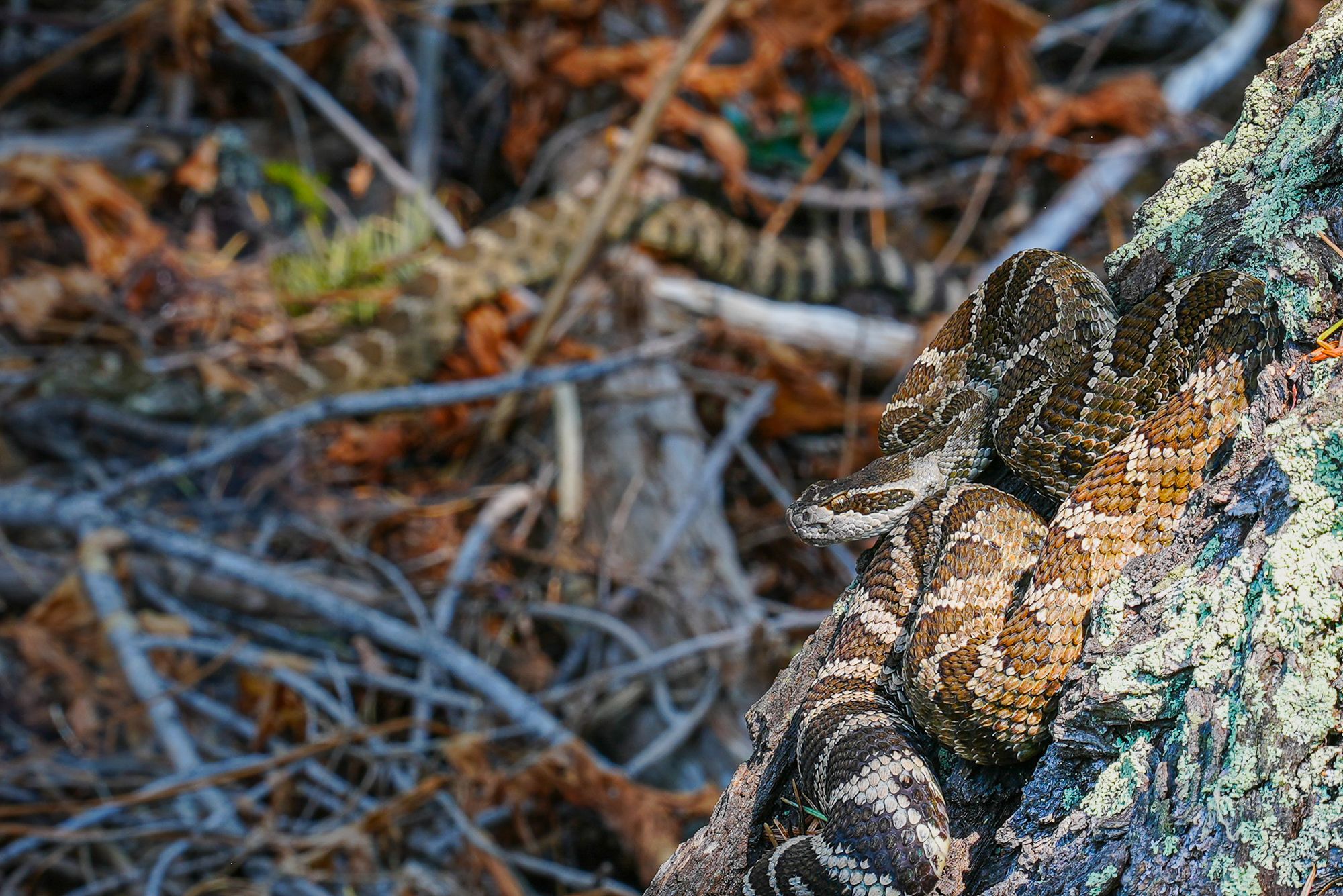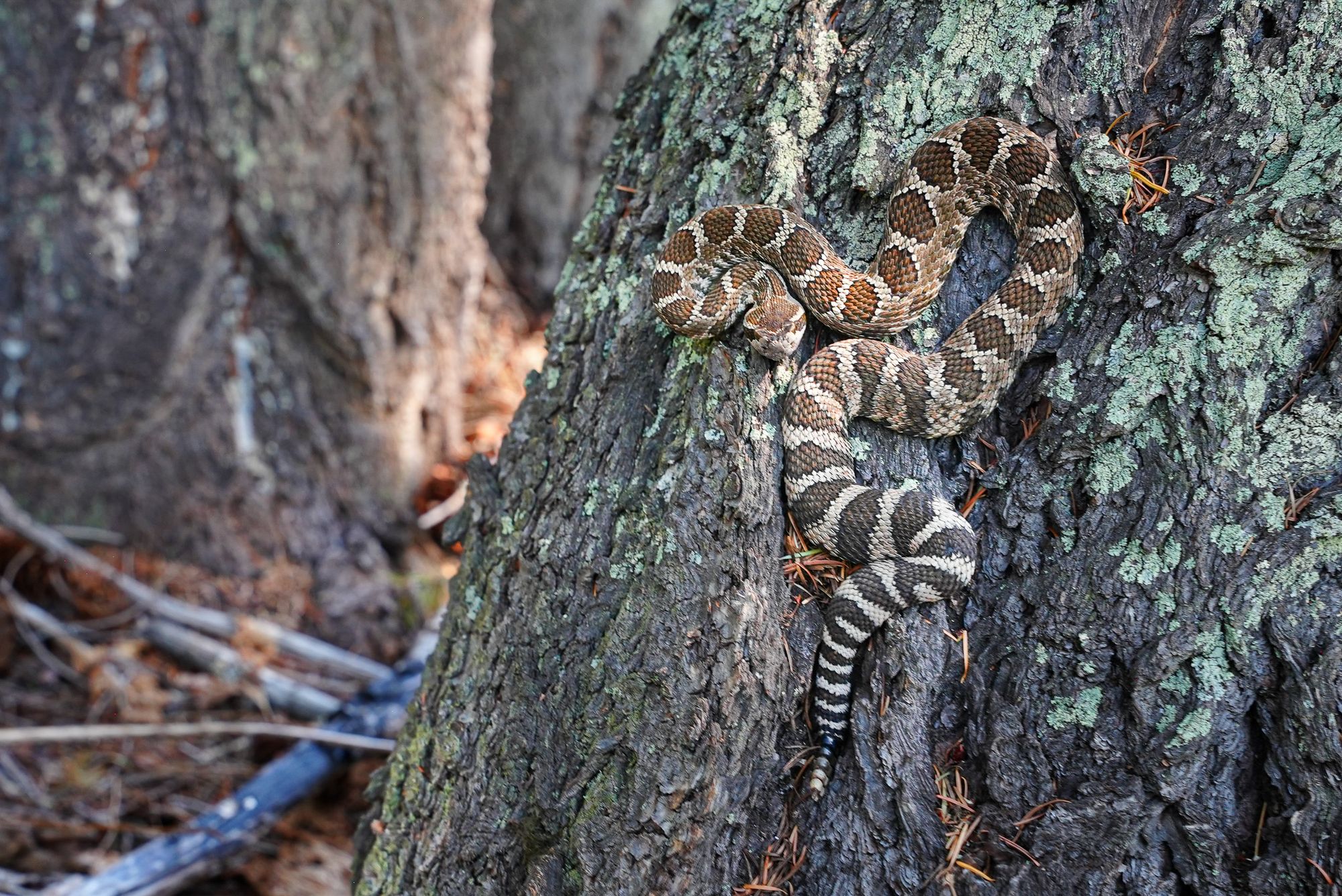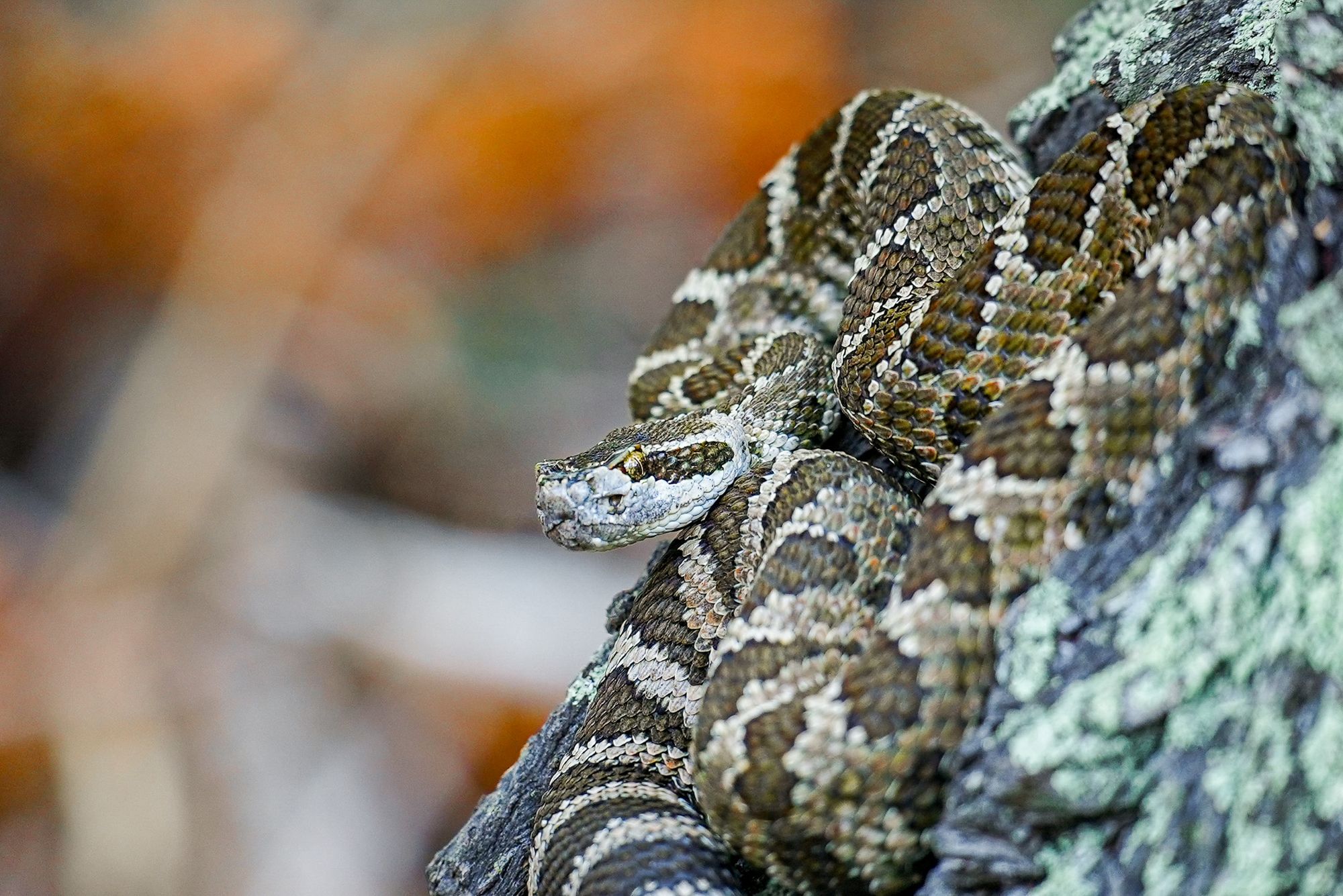Rattled Up

On a recent hike—off trail in a rugged, wild place and far from any people—I started encountering a spooky number of rattlesnakes and boy did it get my attention!
This fear, and visceral reaction, to a wild animal is worth noticing, but I also started thinking about how people misunderstand, hate, and kill rattlesnakes without knowing anything about their lives.
Rattlesnakes are actually fascinating, and surprisingly important, animals. For example, rattlesnakes eat lots of small mammals such as ground squirrels and mice, and studies have documented that in some areas the total weight of rattlesnakes is greater than any other predator, which means they play a vital role in controlling small mammal populations.
Rattlesnakes especially like to eat ground squirrels, and it's estimated that about one-third of all young ground squirrels are eaten by rattlesnakes.
To put this in context it helps to understand a bit about the seasonal cycle that rattlesnakes follow, because other than mating, a rattlesnake's life is more focused on maintaining a proper body temperature than finding food.
In the winter, rattlesnakes move to den sites in rocky areas, where dozens to hundreds avoid freezing temperatures by hibernating together in cracks or under piles of rocks.

Then when spring arrives, they emerge to bask in the sun near their dens, and males will linger around the den for days or weeks before moving a mile or more in search of feeding areas where they spend the summer eating ground squirrels, mice, voles, packrats, small rabbits, lizards, insects, or even fish.
In the meantime, females that are pregnant remain around the den site, basking and using the sun's heat to hasten the development of their embryos. These females barely move and don't seek out food. They may only eat if an animal wanders past them, and as soon as they give birth in September they head back into the den and may end up going 19 months or more without food.
Because this long fasting period is so taxing, females don't begin breeding until they are four to seven years old, and then they typically breed only once every two to three years. In the years when they're not breeding, they focus on eating and rebuilding their reserves.
It's easy to think of rattlesnakes as the ultimate predators, loaded up with venom and striking at every animal that wanders close by, but the truth is far more interesting than that.

Rattlesnakes might actually go weeks or months without getting a meal, partly because the chances are slim that an animal walks by a resting rattlesnake, and partly because half of the time rattlesnakes miss their target when striking.
Even if the snake actually bites an animal there are lots of times when it doesn't follow the animal and researchers think this is because the snake knows it didn't successfully deliver any (or enough) venom so there's no point in wasting energy following the animal.
And on top of this, their favorite food, ground squirrels, have evolved some tricky strategies for fighting back. Adult ground squirrels have developed an immunity to rattlesnake venom, so this forces rattlesnakes to focus on baby ground squirrels which puts them face to face with angry mothers.
A mother ground squirrel will fiercely defend her babies by kicking sand in the rattlesnake's eyes. She will also wave her tail in front of the snake's face as a way of saying "I know you're there and I'm willing to fight you."
If they do fight, it's an equal toss-up whether the snake or the mother squirrel will die, but the mother is defending her young so it's worth it, while the snake can simply crawl away and look for another meal so at this point the snake usually retreats.
All of these factors add up to create a different way of understanding rattlesnakes. Their meals are surprisingly hard to come by so rattlesnakes focus on conserving energy at all costs, and in fact they want nothing more than to rest in peace and avoid conflict.
The last thing a rattlesnake wants is to tangle with a large animal, like a human, that it has no intention of eating.
People also don't realize that it takes many years before females start breeding, and even then, these females are lucky if they breed a few times in their lives, which means that killing older breeding females can have a devastating impact on local rattlesnake populations.

Every time I see a rattlesnake my heart rate still goes up a notch, but I also know to respect and admire this remarkable creature because it doesn't mean to harm me, and its life isn't as easy as you might think.
Member discussion